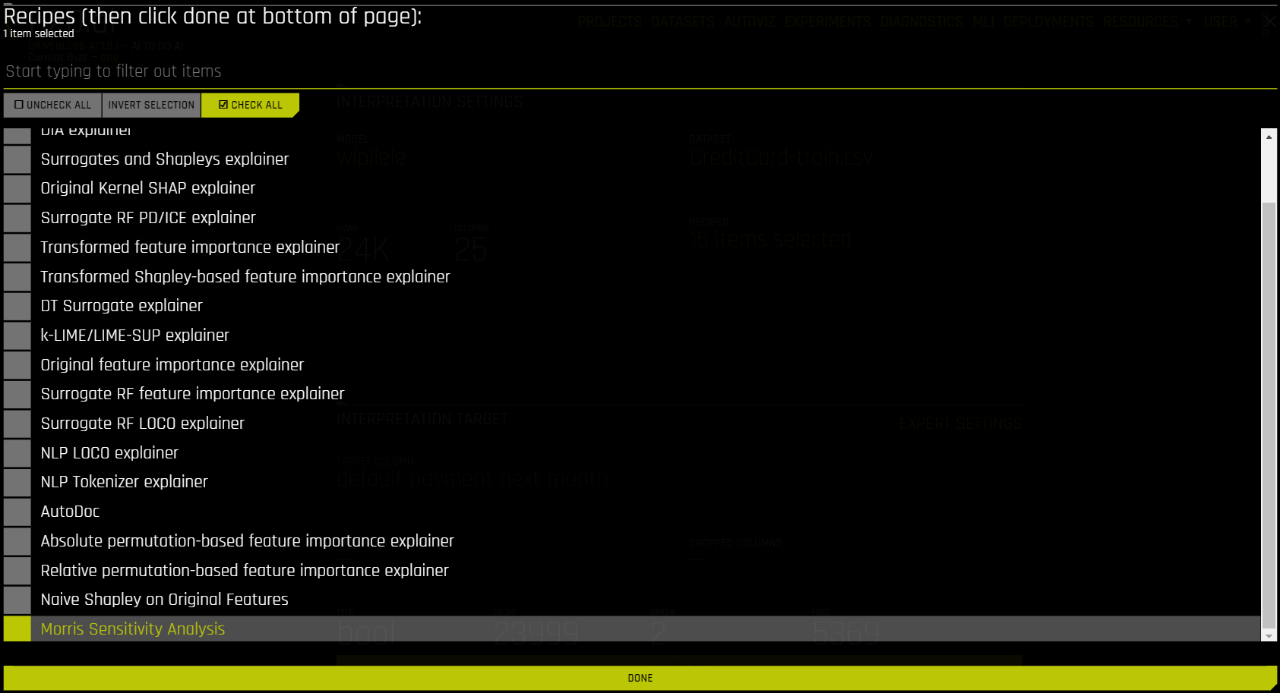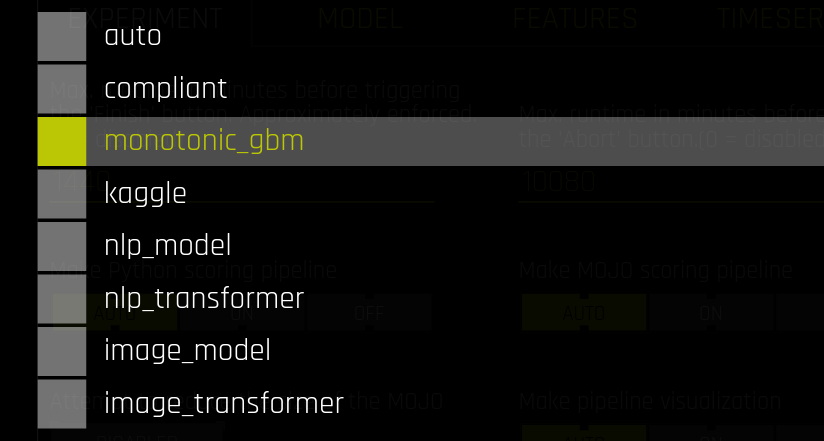H2O Driverless AI 1.9.1: Continuing to Push the Boundaries for Responsible AI


At H2O.ai, we have been busy. Not only do we have our most significant new software launch coming up (details here ), but we also are thrilled to announce the latest release of our flagship enterprise platform H2O Driverless AI 1.9.1. With that said, let’s jump into what is new:
- Faster Python scoring pipelines with embedded MOJOs for real-time inference, interpretability and explainability for production models
- Improved user experience for Shapley feature importances in original and transformed feature space
- Greatly improved time-series modeling for short-horizon forecasting problems
- New out-of-the-box recipe for Monotonic Gradient Boosted Machines (GBM) and various new controls for enforcing custom monotonic models
- Enhanced MOJO Visualization pipeline, displaying first tree or LightGBM and XGBoost models
- Expanded AutoDoc configuration options for Shapley Values, Monotonicity Constraints, and Imbalanced Models
- Enhanced string/numeric feature detection and conversion
- Improved automatic feature engineering for date/time differences
- Preview of multi-GPU, multi-node Dask/RAPIDS XGBoost and LightGBM with Optuna hyper-parameter tuning
Additional Machine Learning Interpretability (MLI) Features:
- MLI Bring Your Own Recipe (BYOR): Customizability with any machine learning interpretability code
- Exposed sampling parameter for all explainers
- Added MOJO support for k-LIME (with download option)
- Added ability to download raw k-LIME data from MLI UI
- Added ability to change threshold for Disparate Impact Analysis in DIA expert settings
- Added ability to run PDP on out of range data
- Added max runtime parameter to Kernel Shapley in MLI expert settings
- Added ability to run PD/ICE for multinomial models in DAI
- Added ability to run MLI TS in typical MLI view (IID)
- Added ability to see rules in Decision Tree surrogate model
- Enhanced MLI AutoDoc configuration options such as k-Lime and Surrogate Decision Tree explanations
So, there is a lot here. While we won’t dive into each individual bullet, there are absolutely some features that should be called out.
MLI Bring Your Own Recipe:
Custom recipes for data preprocessing, models, feature engineering and metrics is one of the major features of H2O Driverless AI as it provides user-mode customizations (with flexible Python code snippets) of the entire machine learning pipeline and opens up the platform to the entire Python ecosystem. With version 1.9.1, custom recipes are now available for MLI as well. We recognize that we spend a lot of our time trying to discover the latest and greatest explainable AI and Machine Learning Interpretability methods, but that users might want to try out others. The Bring Your Own Recipe framework for MLI enables users to bring in any explainability or interpretability method into Driverless AI. Check out the open-source recipes for custom explainers here.


MOJO Metrics:
Obviously, the primary goal of most Machine Learning exercises is to ultimately get into production and start automatically making better decisions and driving more value, but often the very immediate secondary goal is to understand how those models are performing in production over time. We continue to expand the number of metrics embedded in our production model objects (MOJOs) so users can not only see the predictions of the model but see the progressive changes in Shapley Values, k-Lime, real-time AutoDoc documentation, and other explainability metrics to determine if the model is changing focus over time, or potentially getting more or less bias over time.
Better Constraints & Visualizations:
Many of H2O.ai’s longest-standing customers, partners, and investors are in financial services and other highly regulated industries. For that reason, we have always been customer-centric in how we can build a better product for them. For industries requiring very simple, interpretable models, we continue to add a host of constraining options on model universe, feature engineering, and more. In H2O Driverless AI 1.9.1, built-in Monotonic recipes enable interpretable feature engineering under strict monotonicity constraints. Additionally, we have enhanced the MOJO visualization pipeline for Light GBMs and XGBoost so users can better visualize the first tree in the model to see the most essential features and important characteristics of the model structure, such as tree depth.


How to Get Started?
If you are new to H2O Driverless AI, we recommend our risk-free, web-based test drive in H2O Aquarium Cloud . Each lab session lasts for two hours, and you can keep trying our software for free. No license key is required. We also have self-paced tutorials to guide you through the journey. Note : We are in the process of updating the materials to H2O Driverless AI 1.9. The new tutorials should be available in the coming weeks.
For existing users with license keys, please download the latest version from our website . You can also find the links to different cloud marketplaces on the same page.
I hope you enjoy reading this quick overview. Please give it a spin and share your experience with us.
Learning Resources
- Self-paced tutorials and instructor-led courses from our Learning Center.
- H2O Documentation
- H2O Blogs
- Be part of our community; find a meetup group near you.
- H2O.ai Events Overview
- Related webinars:
- July 9: What the Future of AI Looks Like with Arno Candel, CTO
- July 16: More Use Cases and More Value with Automated Computer Vision Modeling
- July 23: State of The Art NLP Models in H2O Driverless AI 1.9
- July 30: Further Exploration into Model Explainability with H2O Driverless AI 1.9
- July 30: Making to Production with Machine Learning








